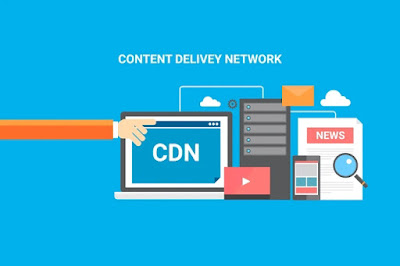Content Delivery Network (CDN): What is CDN & How It Works
What is a Content Delivery Network (CDN), how does it work, and what are the advantages and disadvantages of CDN when it comes to SEO? Learn more in this article.
With Google's Page Experiment appearing in the corner (starting in June), site developers and business owners around the world are using more time and resources to improve the user experience.
Given the upcoming updates on loading, interactivity, and visual stability, this is the right time for site owners to audit their site's performance.
You may have heard that one of the main issues is the re-evaluation of the site's web hosting and content distribution network (CDN) set up.
In this post, you will learn what cDNA is, how it works, and why cDNA is important for SDO.
Why You Need CDN?
The average Internet user is not concerned about how web pages work or what web hosting providers use. The key is fast loading speed, quality content and intuitive navigation - the things they care about are their own user experience.
Speed is equal to money, and this is especially true for eCommerce sites. Pages that load in 0 to 2 seconds have the highest eCommerce conversion rate.
Furthermore, the conversion rate decreases by an average of 4.42% with each additional second of loading between 0 and 5 seconds.
Even for sites without e-commerce, the bottom line flows, affecting page loading speed bounce rates; Those that load in 1 second have an average bounce rate of 7%.
This compares to 11% bounce rate for pages with a delay of 3 seconds and 38% bounce for pages loading in 5 seconds.
From industry, using CDN is a standard strategy to achieve optimal page loading speeds for both desktop and mobile. Cisco research shows that by 2022, global CDNs will account for 2% of all Internet traffic.
It is now almost impossible to meet user expectations and compete with competing sites without using CDN
What is a CDN and how does it work?
Websites that do not use CDN rely on a single server to deliver content to site visitors, whether they are miles away or around the world.
Content distribution networks, on the other hand, consist of multiple geographically distributed servers.
CDN providers often place servers at Internet Exchange Points (IXP), the physical location where Internet service providers connect and exchange traffic.
Site owners pay for CDN services, allowing them to distribute website content such as images, videos, audio, HTML, CSS, and JavaScript files to every server on the network.
These servers store cached versions of the site's content, making it easily available for user requests.
When a user requests a page, the content is delivered through a geographically nearby server. Instead, CDN minimizes page delays by reducing the distance that a site's content needs to travel when requested by a user.
CDN also improves loading speed and user experience by optimizing delivery based on the type of content requested, such as standard web content, dynamic content, video streaming, or large file downloads.
In addition to improving loading speeds, using a CDN increases bandwidth and lowers overhead costs for the server.
Why CDNS is important for SEO
User experience metrics
It is high time for SEO professionals and business owners to prioritize loading speed first.
User experience and SEO are easily linked, and Google has long considered UX factors to determine search rankings.
For example, the Google Mobile-Friendly Update in 201 Google changed the SEO arena by introducing mobile-friendly "as on or off" algorithms.
In July 2018, Google confirmed that landing page loading speed with mobile searches is a search factor.
According to Google's algorithm announcement, an update in May 2021 will make the user experience even more important.
Many previous algorithm updates have surprised site owners and forced SEO seekers to do extensive research to determine and analyze changes.
But this time, Google is telling website owners which metrics to monitor and modify.
The Web. dev website provides an overview of all core web whites and is a tool to test your site.
In terms of loading speed, the site provides concrete statistics for ideal LCP and FID speeds and CLS visual stability. Optimal performance metrics less than 2.5 seconds, below 100 milliseconds, and under 0.1, respectively.
Advanced analytics
Premium CDN providers also include analysts and insights reports as part of the package.
CDN can compile and report critical information such as audience analytics, geographic and query-based traffic data, quality of service data, security event analytics, and audience diagnostics.
CDN packages usually offer customized insights dashboards that make it easy and automated to monitor these performance indicators.
Site security
Using a CDN also protects against site denial-of-service (DDOS) attacks. Because CDN distributes content across numerous servers, it prevents DDOS attacks from affecting the original server.
Furthermore, if a server in the network is attacked or experiences more traffic than handled, the request will return to another server.
Website security indirectly affects SEO by improving the user experience and increasing trust in the site or brand.

Comments
Post a Comment
Please do not add any spam link in the comment section